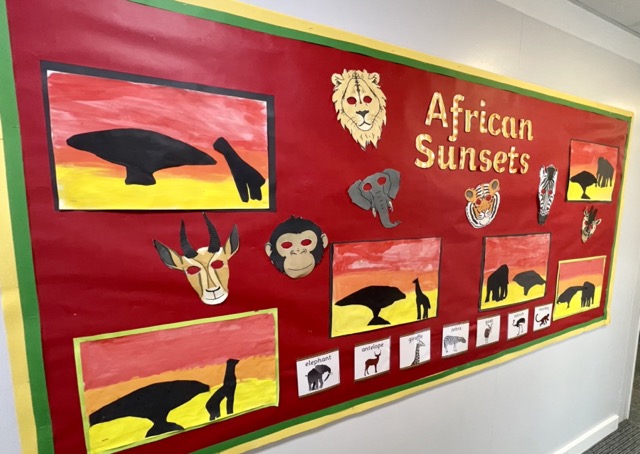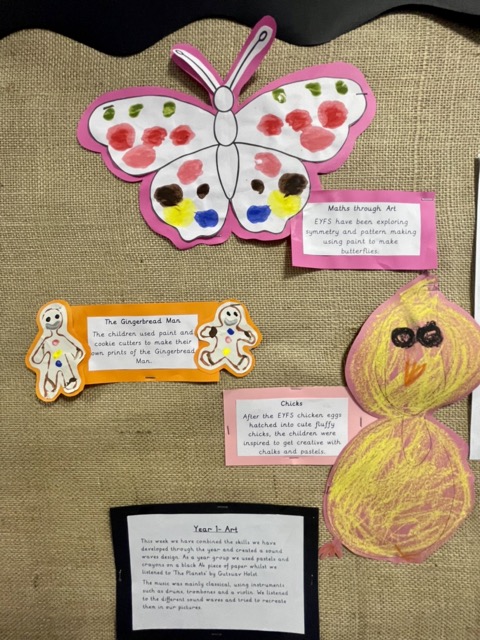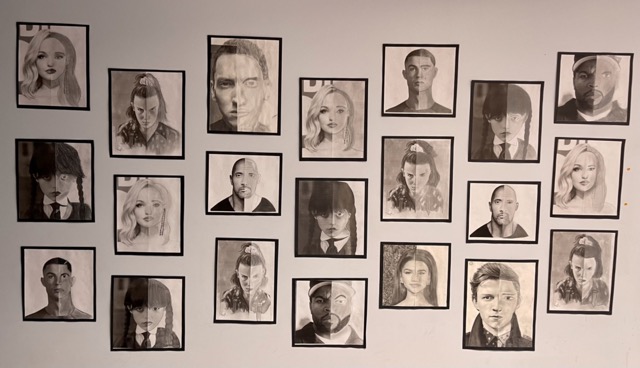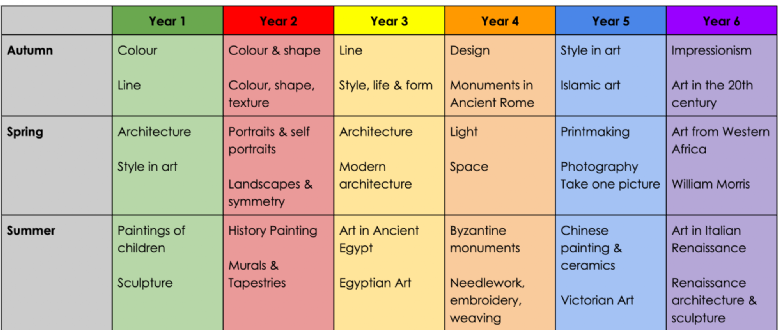Art
“Art enables us to find ourselves and lose ourselves at the same time.”
Art, craft and design embody some of the highest forms of human creativity. A high-quality art and design education should engage, inspire and challenge pupils, equipping them with the knowledge and skills to experiment, invent and create their own works of art, craft and design. As pupils progress, they should be able to think critically and develop a more rigorous understanding of art and design. They should also know how art and design both reflect and shape our history, and contribute to the culture, creativity and wealth of our nation.
 Our art curriculum is a knowledge-rich curriculum. Knowledge, in the realm of art, means knowledge not only of artists, designers, architects and their work, but of the artistic concepts that relate to their work, shown in different types and styles of art, how these relate to each other in a historical context and how this affects the children’s own use of materials and development of skills. The curriculum is designed to enable our pupils to learn by making connections between the work of artists, architects and designers and their own work, which they evaluate and relate back to the works they have studied.
Our art curriculum is a knowledge-rich curriculum. Knowledge, in the realm of art, means knowledge not only of artists, designers, architects and their work, but of the artistic concepts that relate to their work, shown in different types and styles of art, how these relate to each other in a historical context and how this affects the children’s own use of materials and development of skills. The curriculum is designed to enable our pupils to learn by making connections between the work of artists, architects and designers and their own work, which they evaluate and relate back to the works they have studied.
Units of work focus on the different concepts in art and different types of art. In this context, concepts in art means the different elements of art (line, shape, colour, tone, form, space, visual texture and tone), how an artist combines these elements and produces art in different styles, for example realistic or abstract art. Different types of art means the different media used to make art (e.g. sculpture, architecture or painting), different subject matter (e.g. portraits, landscapes or history painting) and different artistic movements, historical periods or geographical cultures (e.g. impressionism, Anglo-Saxon art and Chinese painting).
different subject matter (e.g. portraits, landscapes or history painting) and different artistic movements, historical periods or geographical cultures (e.g. impressionism, Anglo-Saxon art and Chinese painting).
The curriculum meets and builds on the requirements of the National Curriculum and seeks to show how art shapes our history and contributes to our culture. It looks at key movements and historical periods in the history of Western art, studying art from Ancient Greece and Rome, Anglo-Saxon England, the middle-ages, the Italian renaissance, Victorian art and architecture and modernism of the 20th century. Where a unit looks at a period in history which is also addressed in the history curriculum, the art unit is taught alongside or after the history unit. This allows pupils to approach their study of art with a degree of confidence and ‘expertise’ and to consolidate their knowledge by creating connections between the different disciplines. It is recognised that a study of Western art often lacks cultural diversity, and therefore specific units and artists have been added to the curriculum to introduce balance, particularly bearing in mind the cultural diversity of Leighton. We study art from the Islamic world, Western Africa and China and these units address the issue of accepted art history narratives, colonialization and empire and the influence of non-Western art on art of the Western world.


